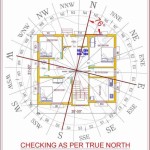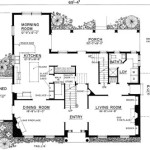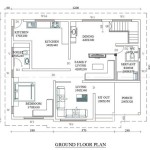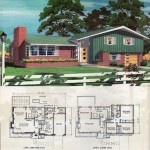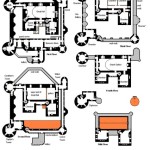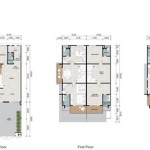Best Small Retirement House Plans
Retirement often signifies a shift in lifestyle and housing needs. Smaller, more manageable homes become increasingly appealing, offering a blend of comfort, affordability, and ease of maintenance. Choosing the right retirement house plan requires careful consideration of lifestyle, budget, and future needs. This article explores various factors to consider when selecting the best small retirement house plan.
Prioritizing Accessibility: A key element in retirement home design is accessibility. As individuals age, mobility may become a concern. Opting for single-story homes eliminates the need for stairs, reducing the risk of falls and simplifying daily living. Incorporating wider doorways and hallways, as well as grab bars in bathrooms, further enhances accessibility and promotes independent living. Walk-in showers without thresholds also contribute significantly to ease of movement.
Embracing Open Floor Plans: Open floor plans are particularly well-suited for small retirement homes. They create a sense of spaciousness and encourage interaction, even within a compact footprint. Combining the living room, dining area, and kitchen into a single, flowing space maximizes functionality and promotes a sense of community. This layout is ideal for entertaining guests and spending time with family.
Maximizing Natural Light: Ample natural light plays a crucial role in enhancing the ambiance and comfort of a small home. Large windows and strategically placed skylights can brighten the interior, reducing the need for artificial lighting during the day. Natural light also has positive effects on mood and overall well-being, contributing to a more comfortable and inviting living environment.
Considering Outdoor Living Spaces: Extending living space outdoors can significantly enhance the enjoyment of a small retirement home. Patios, decks, or even small courtyards provide areas for relaxation, gardening, or socializing with friends and family. These outdoor spaces can seamlessly blend with the interior, creating a cohesive and enjoyable living experience.
Focusing on Low-Maintenance Materials: Minimizing maintenance is a top priority for many retirees. Selecting durable and low-maintenance materials for both the exterior and interior of the home reduces the time and expense associated with upkeep. Durable siding, composite decking, and easy-to-clean flooring options contribute to a stress-free living environment.
Downsizing and Decluttering: Moving into a smaller retirement home often necessitates downsizing and decluttering. Incorporating ample storage solutions into the house plan helps maintain an organized and clutter-free environment. Built-in shelving, walk-in closets, and efficient pantry designs provide dedicated spaces for belongings, maximizing the use of limited space.
Exploring Different Architectural Styles: Small retirement homes can be designed in various architectural styles to suit individual preferences. Ranch-style homes offer single-story living and easy accessibility, while bungalow designs provide charm and character. Cottage-style homes exude a cozy and inviting feel, while contemporary designs emphasize clean lines and minimalist aesthetics. Choosing a style that reflects personal taste contributes to a more personalized and enjoyable living experience.
Budgeting and Financing: Establishing a realistic budget is crucial when planning a retirement home. Factor in the cost of land, construction, materials, and potential upgrades. Exploring various financing options, such as mortgages or reverse mortgages, helps determine the most suitable approach for individual financial circumstances. Working with a financial advisor can provide valuable insights and guidance throughout the budgeting process.
The Importance of Location: The location of a retirement home significantly impacts lifestyle and accessibility. Proximity to healthcare facilities, shopping centers, and recreational activities enhances convenience and promotes an active lifestyle. Considering the local climate and environment also contributes to overall comfort and well-being. Researching different neighborhoods and communities helps identify the most suitable location for individual needs and preferences.
Working with a Qualified Architect: Collaborating with a qualified architect is essential for designing a small retirement home that meets specific needs and preferences. An architect can translate individual visions into functional and aesthetically pleasing designs. They can also provide valuable guidance on building codes, regulations, and sustainable building practices. Open communication and collaboration with the architect throughout the design process ensure a successful outcome.
Incorporating Smart Home Technology: Integrating smart home technology can enhance safety, security, and convenience in a retirement home. Automated lighting systems, security cameras, and smart thermostats can be controlled remotely, providing peace of mind and simplifying daily tasks. Voice-activated assistants can further enhance accessibility and convenience, particularly for individuals with mobility limitations.
Considering Future Needs: When planning a retirement home, it's important to anticipate future needs and potential changes in health or mobility. Designing a home that can adapt to evolving needs ensures long-term comfort and independence. Flexible spaces that can be easily modified, such as a guest room that can be converted into a home office or a caregiving suite, provide valuable adaptability for future requirements.
Universal Design Principles: Incorporating universal design principles into the house plan creates a living environment that is accessible and usable for people of all ages and abilities. Features such as lever-style door handles, adjustable countertops, and zero-step entries enhance accessibility and promote independent living, regardless of age or physical limitations.

Small One Story 2 Bedroom Retirement House Plans Houseplans Blog Com

Small One Story 2 Bedroom Retirement House Plans Houseplans Blog Com

Small One Story 2 Bedroom Retirement House Plans Houseplans Blog Com

Small One Story 2 Bedroom Retirement House Plans Houseplans Blog Com

Small One Story 2 Bedroom Retirement House Plans Houseplans Blog Com
:max_bytes(150000):strip_icc()/1375tideland_4c_ext-364758e42ee5467a8500d2be5ec8ba25.jpg?strip=all)
15 Dreamy House Plans Built For Retirement

Small One Story 2 Bedroom Retirement House Plans Houseplans Blog Com
:max_bytes(150000):strip_icc()/SL-2009--e70851d071694f7294fb8e47d3dd74d5.jpg?strip=all)
15 Dreamy House Plans Built For Retirement
:max_bytes(150000):strip_icc()/Adaptive-Cottage-Plan-SL2075-5cedf3dbee93457b96d46ba02da340e5.jpeg?strip=all)
15 Dreamy House Plans Built For Retirement
:max_bytes(150000):strip_icc()/best-homes-of-2016-2442701_james34054_0_0_1_0-9b309399787b4d82bb7333d8b1f4bf84.jpg?strip=all)
15 Dreamy House Plans Built For Retirement


